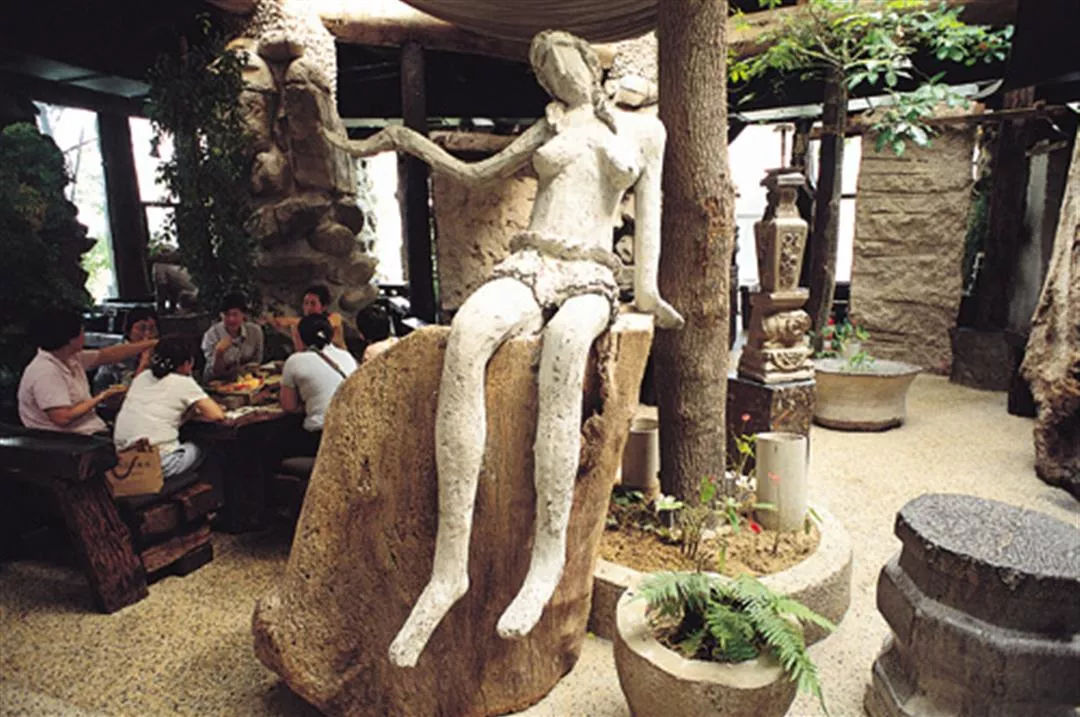The female body, meditation, dance
Of the two branches of Five Cent Driftwood House that are most striking, one is built in an orchard: the Hsinying branch's exterior walls are entwined with rhythmic lines like the tentacles of an octopus, while inside, a latticed wall of glass beads and shells gives a delightful appearance to the simple structure. Logs unmarred by chisel marks and a mango tree left where it was planted form the main structure of the two-story building. Large translucent glass curtains give the impression of coherence with the surrounding forest, giving the patrons an anarchic sense of being in a forest despite being in a restaurant.
Large clay sculptures began to appear at the Taichung branch, known to locals as the "mud dream-house." Above the entrance, four young girls, hand in hand, gaze down on the guests, and within the restaurant is a corridor formed by an arched concrete wall, conveying the distinctive style of a grotto, a departure from typical restaurant layouts. Two female clay statues extending from the wall to the ceiling, a floral relief, and the numerous clay sculptures of women hanging on the wall give visitors to Five Cent Driftwood House the feeling that one is stepping into an art gallery.
The worlds Hsieh creates never stray far from the female body, for that is the theme she is most familiar with.
"Innate in women are abundant body language and curves. This is a theme I can never stop creating on." Careful observation of these feminine sculptures reveals a lack of distinct facial features; there is only a sense of motion from the long, curly hair and the unusual postures of these sculptures. These come from the notes Hsieh takes when in meditation and dance.
"Meditation and dance are the driving forces behind my inspiration," says Hsieh. She acknowledges that she is a "lazy" person, unassuming in everything she does. Despite her devotion to her three children, she chose to leave them in the care of her parents, while she immersed herself in a spiritual world that others may find incomprehensible. When she is alone, she prefers spending the whole day relaxing in deep thought or making up her own dance rhythms to music, doing nothing formal, but simply letting her creative juices flow.
Another element commonly found in her work is the patterns of the natural world. Whether it's logs, shells, totems or what-have-you, Hsieh is able to freely make use of them, allowing each work and region of space to be infused with the peace and joy of communion with nature, so much so that some suspect that she is of Aboriginal descent.

Hoping to harmonize gentle feminine curves with the hard structure of the building, Hsieh has placed sculptures of female forms throughout the restaurant. This is a view inside the Tainan restaurant.